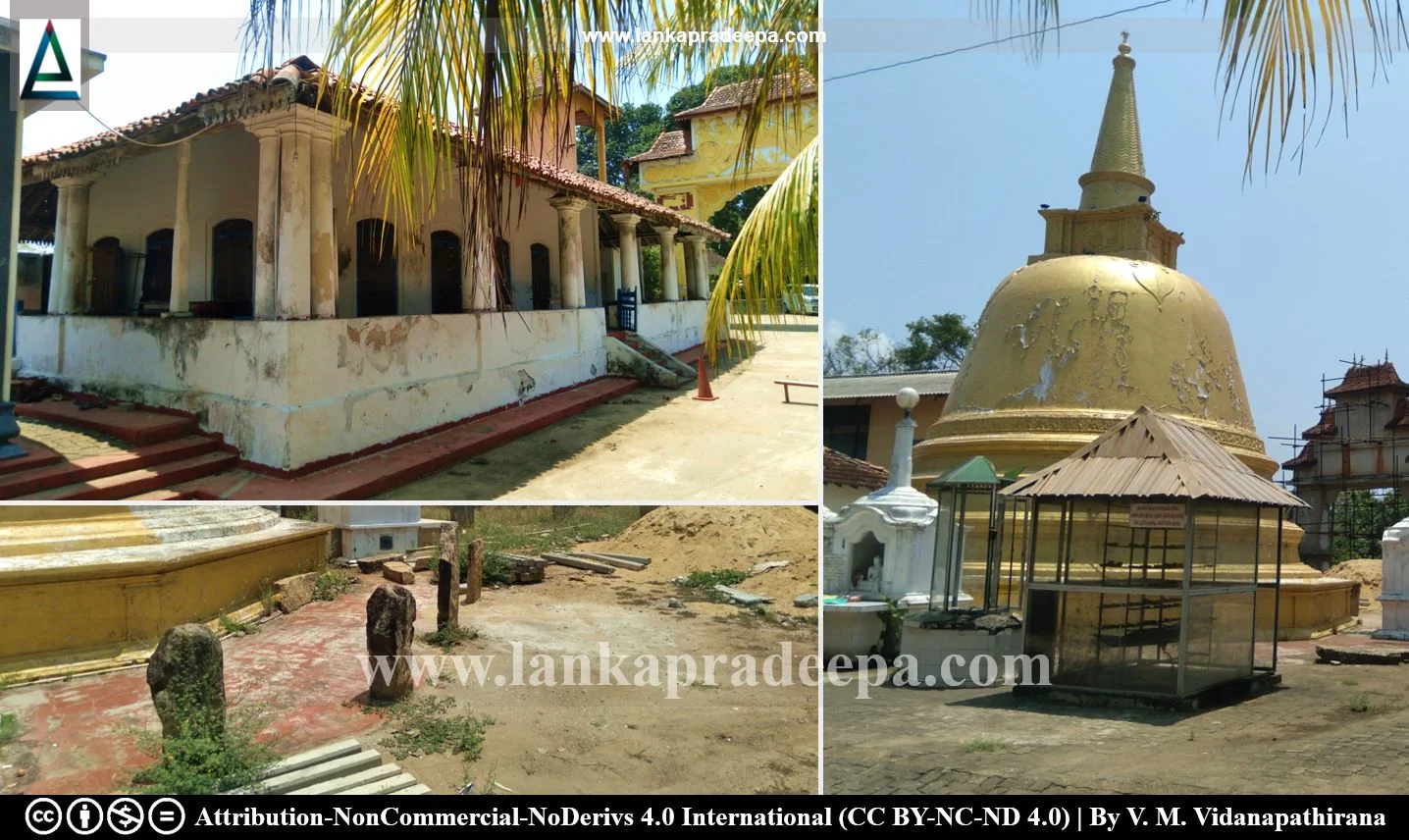
Henakaduwa Purana Viharaya, also known as Henakaduwa Sri Sudarshanarama Viharaya or Kadadora Devalaya of Kataragama (Sinhala: හේනකඩුව පුරාණ විහාරය) is a Buddhist temple situated in Marakolliya village near Tangalle in Hambantota District, Sri Lanka.
History
According to the local tradition, some of the buildings of this temple were constructed by King Keerthi Sri
Rajasinghe (1747-1782 A.D.) of Kandy (Bohingamuwa, 2005).
Folklore
There are several folk stories about the origin of this temple and the first of which is related to the arrival of Lord Kataragama to Sri Lanka. It is said that Lord Kataragama who was with his assistant named Kadavara rested in a chena (Hena in Sinhala) at this place for a while on their way from Devinuwara to Kataragama. After getting up from there, he started his journey but after reaching the Wadigala area he remembered that he had forgotten his sword (Kaduwa in Sinhala) at the chena where he rested. Although he returned there to bring his sword back, it is said that he was unable to take it. Another story tells that Pandukabhaya (5-4 century B.C.), the first ruler of Sri Lanka erected a shrine at this place.
Locals also link the history of this site to the reign of Kavantissa the father of Dutugemunu (reigned: 161-137 B.C.) of Anuradhapura. It is believed that the royal elephant Kandula who was first sighted near a lake (probably the nearby Rekawa Lagoon) by a Veddah was tied in a tree located at this temple site.
The temple
Among the structures of the temple, the image house, the monks dwelling and the Dansala are architecturally and archaeologically significant (Bohingamuwa, 2005). At the entrance to the temple is a large statue of God Kataragama indicating its religious affiliation with the famous Kataragama temple. The preaching hall, the Bodhi tree and the Stupa are located near the entrance gate and it is said that the Bodhi tree is a sapling brought from the Jaya Sri Maha Bodhi Tree at Anuradhapura. The Stupa is painted in gold colour and several broken stone pillars are found scattered around it.
The Buddha shrine or the image house consists of three sections; the inner chamber, the outer chamber and the front pavilion. A large reclining Buddha statue is found within the inner chamber while the outer walls of it are decorated with images depicting the Suvisi-vivaranaya (Buddha to be receiving the blessing from 24 previous Buddhas).
A protected site
The ancient Buddha shrine, the Bhikku rest house and the Dagoba within the precincts of Henakaduwa Sri Sudarshanarama Vihara situated in Marakolliya village in the Tangalle Divisional Secretary Division are archaeological protected monuments, declared by the government Gazette notifications published on 6 June 2008.

.
Attribution
#) LankaPradeepa.com extends its gratitude to V. M. Vidanapathirana for providing the necessary photographs required for this article. All the photos are published here with the permission of the author.
References
1) Bohingamuwa, W., 2005. Preliminary Survey of Tsunami-affected Monuments and Sites in the Maritime Region of Sri Lanka. Part VI. ICOMOS Sri Lanka. p.128.
2) The Gazette of the Democratic Socialist Republic of Sri Lanka. No: 1553. 6 June 2008. p.523.
Location Map
This page was last updated on 18 November 2023

